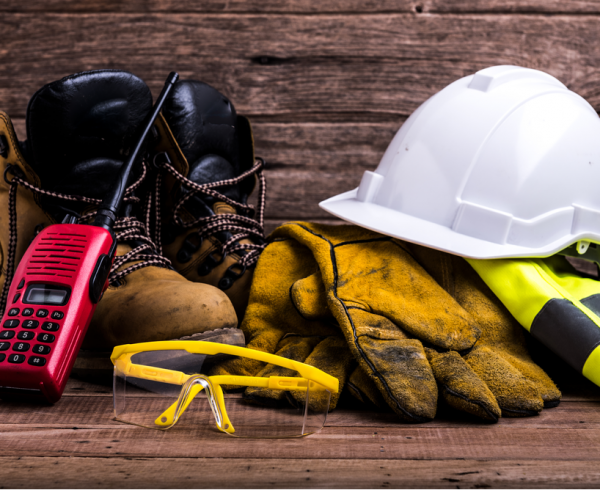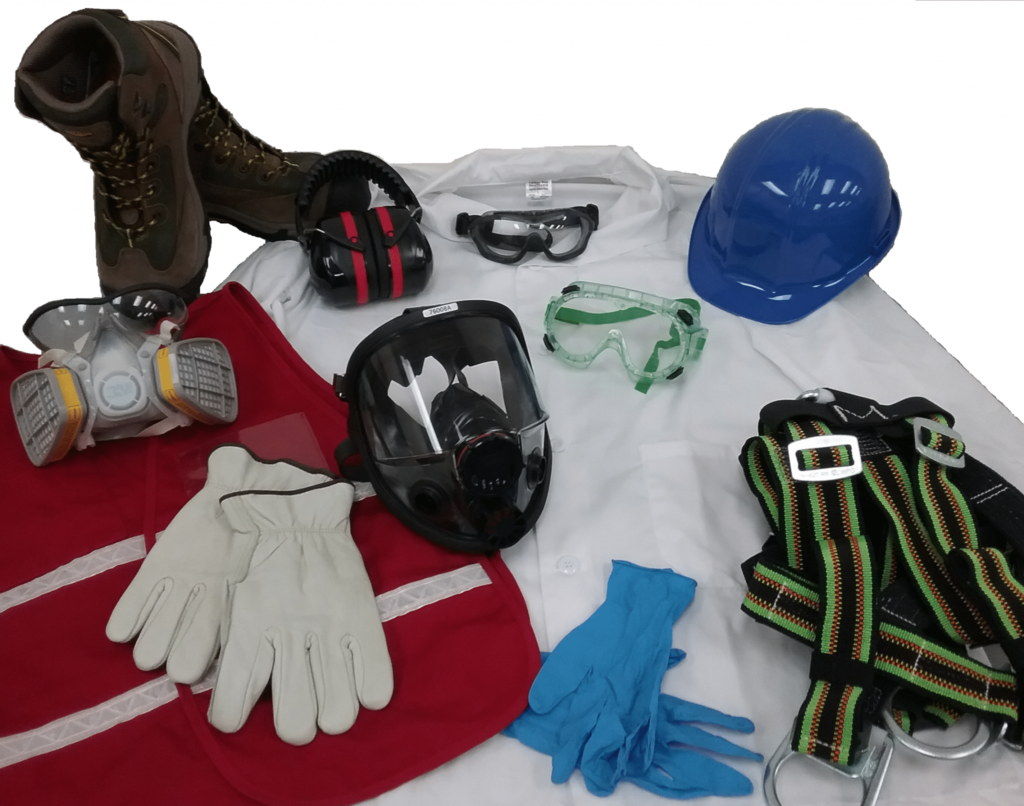——Interpretation of GB 39800.4-2020 Specification for Personal Protective Equipment Part 4: Non Coal Mine Mountains 【Abstract】Personal protective equipment is an important line of defense to maintain public safety and work safety, and it is also an important guarantee to guard the safety of workers’ lives and occupational health. The release and implementation of GB 39800.4-2020 Specifications for the provision of personal protective equipment -Part4: Non-coal mines standard will play a positive role in promoting the safety and health of workers in the non-coal mining industry. This paper explains the background, scope and main contents of the standard, in order to provide reference for better implementation of the standard. 【Keywords 】 personal protective equipment; provision; Non-coal mines; safety; occupational health

0 Préface
Personal protective equipment is a general term for various items worn and equipped to prevent physical, chemical, biological and other harmful factors from harming the human body. It is the last line of defense to protect the safety and health of individuals. In the past, personal protective equipment was called labor protection articles or labor protection articles, which were mostly used in production labor. The current personal protective equipment is not only this, but also involves personal protective equipment for military, police and firefighting, as well as personal protective equipment for public health emergencies, natural disasters, accident disasters, social security incidents and other rescue work. With the deepening of reform and opening up and the development of socialism with characteristics of the new era in my country, the market demand for personal protective equipment has become larger and larger, and the application fields have become wider and wider, but some systemic problems in the field of personal protective equipment have gradually emerged. , such as the lack of overall overall planning and planning, such as laws and regulations to ensure the safety and health of emergency personnel, such as the provision of personal protective equipment, etc. Although my country has successively promulgated a series of national standards for the equipment of personal protective equipment ((2-31), these national standards are recommended in nature and are voluntarily adopted through economic means or market regulation, and lack legal effect. GB 39800.4-2020 ” “Personal Protective Equipment Specifications Part 4: Non-coal mines” standard was released on December 24, 2020, and officially implemented on January 1, 2022. It is a mandatory national standard for personal protective equipment, and is a non-coal mine industry personal protective equipment. Equipped with the basis and guarantee.
1 Standard project background
The non-coal mining industry is a resource and basic industry that has an important impact on economic and social development. Especially in recent years, with the increasingly complex international situation and the increasing size of my country’s economy year by year, the market demand for mineral resources has continued to grow. The annual output value of the non-coal mining industry has reached hundreds of billions of yuan, with hundreds of direct employees. million people. The total number of non-coal mines is large. As of the end of 2017, there were 44,998 non-coal mines nationwide, including 37,845 metal and non-metal mines (29,007 open-pit mines accounted for 76.6%, and 33,156 small-scale mines accounted for 87.6%). Underground mines with more than 30 people in a single shift (1,072), open-pit mines with a slope height of more than 200m (89), and overhead warehouses have the highest accident risk, and are prone to serious production safety accidents involving mass deaths and injuries. The object of the key supervision of the safety production supervision department. In 2017, a total of 407 production safety accidents of various types occurred in non-coal mines across the country, and 484 people died. Figure 1 shows the trend of the total number of non-coal mine accidents and the number of fatalities from 2013 to 2017. The top ten regions in terms of accident fatalities from 2013 to 2017 are Yunnan, Liaoning, Guangxi, Hunan, Hubei, Inner Mongolia, Jiangxi, Sichuan, Shaanxi, and Xinjiang, as shown in Figure 2. In 2017, there were 259 accidents and fatalities in the above-mentioned regions. 288 people, accounting for 63.6% and 59.5% of the total number of non-coal mine accidents in the country in 2017, respectively.
From the statistics of 2014, there were 640 fatalities in accidents in 2014, accounting for nearly 10% of the total fatalities in industrial, mining and commercial accidents. The number of deaths caused by lack of or defective personal protective equipment has also accounted for 10% of the total number of deaths in industrial, mining and commercial accidents.
The reason is not caused by the lack of personal protective equipment product standards in our country, but the lack of mandatory national standards for personal protective equipment equipment. Enterprises have no basis for personal protective equipment equipment, and relevant departments have no basis for law enforcement. The number of deaths due to missing or defective personal protective equipment remains high.

From a legal perspective, my country’s regulations on personal protective equipment are all
There are clear regulations, such as Article 45 of the “Safety Production Law”; Article 54 of the “Labor Law”; Articles 22 and 25 of the “Occupational Disease Prevention Law”. GB/T 29510-2013 “Basic Requirements for Personal Protective Equipment”, which puts forward general requirements for the identification principles and methods of hazardous and harmful factors, procedures for personal protective equipment, management and training, etc., but it lacks specific industries and specific types of work. Equipped. And because it is a recommended national standard, it cannot provide specific staffing guidance and staffing constraints for workers in various industries.
In the second half of 2016, entrusted by the Policy and Regulation Department of the former State Administration of Work Safety, the National Personal Protective Equipment Standardization Technical Committee organized the Shanghai Institute of Work Safety and other units to conduct a special survey on the equipment of personal protective equipment in the non-coal mining industry. . The survey adopted various methods such as field research, discussion, exchange and questionnaire survey, and the survey content involved the production, testing and inspection, certification, equipment, management and use status of personal protective equipment. The survey found that the equipment standards of the non-coal mining industry are uneven, the equipment that should be equipped is not equipped or not fully equipped, and some positions or types of work are even mismatched, and there is a lack of unified standards and standards. The standard for the equipment of personal protective equipment in the coal mining industry is to standardize the equipment and management of personal protective equipment. 2 Scope of application of the standard
GB 39800.1-2020 “Personal Protective Equipment Specifications Part 1: General Provisions” stipulates the overall requirements for the equipment of personal protective equipment (ie labor protection articles), and the “Personal Protective Equipment Specifications Part 4: Non-coal mines” standard is equipped for the industry The specific implementation standards should be used in conjunction with the “Personal Protective Equipment Specifications Part 1: General Provisions”. Therefore, it is clearly pointed out in the general requirements that the principles and management of personal protective equipment should be implemented in accordance with the “Personal Protective Equipment Specifications Part 1: General Provisions”.
The “Personal Protective Equipment Specifications Part 4: Non-coal mines” standard is applicable to non-coal mines, including metal mines, non-metal mines, water and gas mines, and energy mines other than coal mines, oil and natural gas. Employers and their employees personal protection Equipment allocation and management. Not applicable to the equipment and management of fire-fighting personal protective equipment for employers in non-coal mining industries. 3 Main content of the standard
3.1 Exigences générales
GB 39800.1-2020 “Personal Protective Equipment Provisioning Specifications Part 1: General Provisions” specifies the overall requirements for the provision of personal protective equipment (i.e. labor protection equipment), including provisioning principles, provisioning procedures, identification and assessment of workplace hazards, personal protection Equipment selection, traceability, scrapping and replacement, training and use, etc. The “Personal Protective Equipment Specifications Part 4: Non-coal mines” standard is the specific implementation standard for the non-coal mining industry. The principles, equipment management and equipment procedures of personal protective equipment are in accordance with GB39800.1-2020 “Personal Protective Equipment Equipment Specifications Part 1” Section: General Provisions Implementation. 3.2 Identification and Evaluation of Hazardous Factors The identification of hazardous and harmful factors is the premise and basis for the correct equipping of personal protective equipment. The “Personal Protective Equipment Specifications Part 4: Non-coal Mines” standard is based on the requirements of GB39800.1-2020 “Personal Protective Equipment Specifications Part 1: General Provisions” and GB/T13861-2009 “Classification of Hazardous and Harmful Factors in the Production Process and Code”, and combined with the characteristics of safe production in the non-coal mining industry, firstly put forward the overall principles of identification and evaluation of hazard factors. At the same time, two identification methods for hazard factors are provided, which can be combined with Table 1 according to the type of work, or refer to Appendix A for identification of hazard factors according to the type of work. A hazard assessment is then carried out on the basis of the identified hazard factors as a basis for selecting the appropriate personal protective equipment.
The main operation categories involved in the production process and the harmful factors caused by them are identified, and the labor protection articles applicable to each operation category are summarized: the employer should combine the characteristics of safe production in the industry, Identify and assess the hazard factors that may be involved, and use this as the basis for selecting the appropriate personal protective equipment. Different enterprises, different production processes and different degrees of automation, even the same type of work may be equipped with different personal protective equipment.
For example, in the metal mining process, cyanide is widely used as a solvent for metals such as gold, silver, and copper. Hydrogen cyanide gas is also easily generated in the cyanide solution, and contact with the solution can also irritate the skin. Cyanide can damage the heart and brain and cause death. Low-level exposure to cyanide can cause long-term health effects such as difficulty breathing, chest pain, vomiting, blood changes, headaches, and goiter. Therefore, the practitioners must be fully protected during the above process, including breathing and skin.
3.3 Provision of personal protective equipment
The equipment of personal protective equipment in the non-coal mining industry, due to the complexity of various types of work, cannot be compelled to specify what kind of personal protective equipment should be equipped for each type of work. of personal protective equipment. However, in order to facilitate the provision of personal protective equipment for employees in non-coal mining industries, two methods are given in the standard informative appendix:
a) Combining the hazard factors and hazard assessment results identified in Table 1 according to the job category, and the applicable personal protective equipment recommended in Table 1, combined with the protective position, protective function, scope of application of the personal protective equipment and the suitability of the protective equipment to the user , select the appropriate personal protective equipment.
b) Execute with reference to Appendix B. For the types of work not covered in Appendix A, the employer shall identify and evaluate the hazard factors according to the operation characteristics of the type of work, and equip corresponding personal protective equipment according to the requirements of the “Personal Protective Equipment Provisioning Specification Part 1: General Provisions”.
Employers can equip personal protective equipment according to the type of work or type of work, or a combination of the above. 3.4 Appendix
The two appendices of the “Personal Protective Equipment Specifications Part 4: Non-coal mines” standard are informative appendices, of which Appendix A lists the typical types of work and hazard factors in the non-coal mining industry. The types of work and their classification in the non-coal mining industry are mainly based on the “Occupational Classification of the People’s Republic of China (2015 Edition)” [8] Appendix B specifies the equipment of personal protective equipment for various types of work in the non-coal mining industry. According to the hazard factors of various types of work, and combined with the protective function and scope of application of personal protective equipment, the standard provides recommendations for the specific equipment of personal protective equipment for each type of work. Among them, it is necessary to specify:
1) The date of the longest replacement period of personal protective equipment is calculated from the date when the personal protective equipment is issued to the operator (see the issuance and use records of personal protective equipment); the longest replacement period can be based on the product manual, expiration date, and actual use time , work intensity, wear conditions, etc. are appropriately shortened.
2) If the temperature difference between seasons in the area where the enterprise is used for personal protective equipment varies greatly, protective equipment for spring, autumn, winter and summer can be configured according to the season, and the maximum replacement period should also be changed accordingly.
3) Personal protective equipment such as self-contained open-circuit compressed air respirators, seat belts (including other fall protection products), long-tube respirators can be configured for teams.
4) Enterprises using personal protective equipment should increase or decrease some functions according to the characteristics of the post and the corresponding dangerous and harmful factors. 4 Conclusion
The release and implementation of the “Personal Protective Equipment Specifications Part 4: Non-coal mines” standard provides guidance and constraints for the equipment of personal protective equipment in the non-coal mine industry, and provides supervision and supervision for the equipment of personal protective equipment for supervisors. The basis for law enforcement is also an important means for enterprises to implement the equipment and management of personal protective equipment. In addition, “Personal Protective Equipment Specifications Part 4: Non-coal mines”, as my country’s technical regulations, is also an important supporting document for the new “Safety Production Law”. convoy.
 3M
3M Ansell
Ansell Dellta Plus
Dellta Plus Drager
Drager edelrid
edelrid Honeywell
Honeywell JUTEC
JUTEC lakeland
lakeland MSA
MSA Nouveau cochon
Nouveau cochon Weldas
Weldas